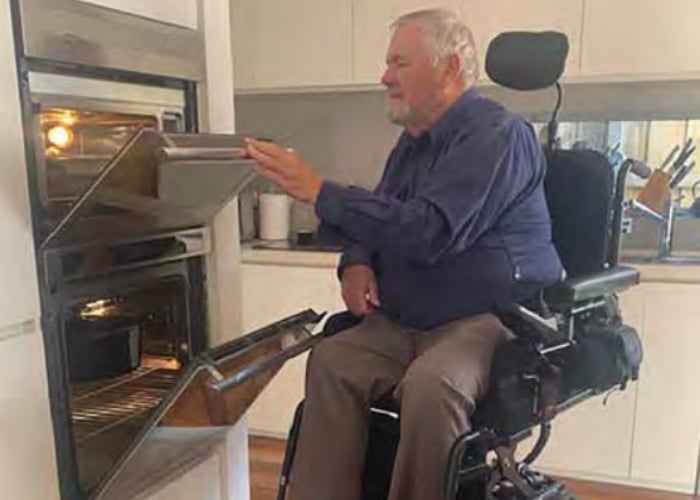
A major change to home modification funding is about to challenge the way older Australians live – and age with dignity and independence – at home. From 1 July, a lifetime cap of just $15,000 replaces the former, more flexible model, which allowed up to $10,000 annually through the Commonwealth Home Support Programme or accrued funds through Home Care Packages. For many, this shift could mean the difference between living safely at home and facing preventable hospital visits and premature entry into residential care, significantly impacting the lives of older people in Australia.
Occupational therapists – through their expert guidance – see firsthand how home modifications, big and small, can transform lives. Installing handrails, altering steps, widening doorways or redesigning spaces for accessibility are essential building blocks towards independence. Falls alone account for more than half of hospitalisations among people over 65, and research shows home hazard reductions can reduce falls by up to 30 per cent.
Yet, these vital changes often come with substantial costs. Major modifications can exceed $50,000, far beyond the new cap. Without appropriate modifications, homes become risk zones for clients and care staff alike. Unmodified homes may force providers to limit services or withdraw them altogether to protect workers’ safety. For home care providers, changes to funding for home modifications present both a challenge and an opportunity to step up as advocates and allies in keeping older Australians safe at home.
Peter Willcocks, a polio survivor and wheelchair user, understands the importance of home modification funding better than most. Thoughtful modifications to his home, from accessible laundry layouts to raised toilets, enable him to manage daily life independently. However, Peter worries about the future for others under the new funding model. “I don’t need to rely on my wife for everything,” he says. “That’s a gift. But the $15,000 lifetime cap just isn’t enough.”
So, how can home care providers help play a role in navigating the funding shift? With many families unaware of the new funding constraints, the first step is education. Providers can help clients and their families understand options, prepare financially and access other sources of support where possible. Referring early and often is also key. Providers should integrate occupational therapists into care planning processes from the beginning, allowing enough time to carefully and thoroughly identify and prioritise modifications before crises occur.
By actively working with occupational therapists, home care providers can help bridge the gap between the needs of clients like Peter and the limitations of the funding system. Occupational therapists can help assess, recommend and design modifications tailored to individual circumstances. It’s also important to remember that the best solution doesn’t have to be the most expensive. With budgets and funding shrinking, aged care providers should work closely with occupational therapists to explore staged modifications to maximise safety and function.
Ultimately, occupational therapy is about more than equipment and ramps. It’s about ensuring older Australians can continue living with autonomy and dignity. As funding becomes tighter, the partnership between home care providers and occupational therapists will be more important than ever.
Christina Wyatt
Professional Practice Advisor for Aged Care
Occupational Therapy Australia